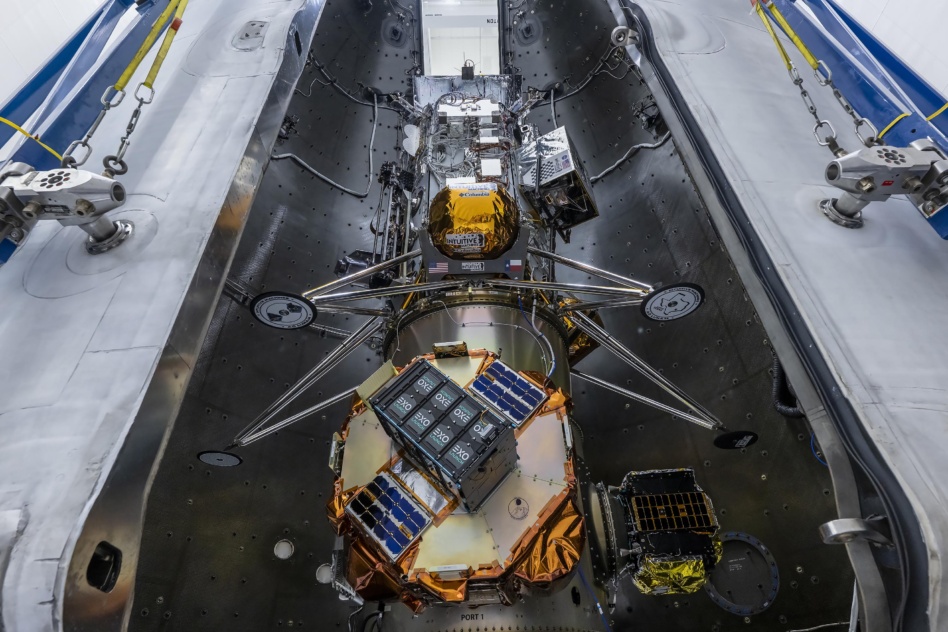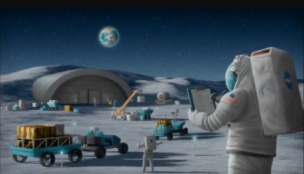After becoming the first company to softly land a spacecraft on the lunar surface in 2024, Intuitive Machines is back with a second mission to Earth’s silvery neighbor set to launch this week.
Payload talked to IM CTO Tim Crain about the Athena lander, the onboard technology, and, yes, those pesky laser range-finders.
This interview has been edited for length and clarity.
Intuitive Machines is sending its second lander to the Moon. They’re both Nova-C landers, but did anything you learned from Odysseus inform this mission?
The party line on this is that 90% of the Nova C is the same as the last one. We’ve moved the helium tanks around because we have heavier payloads.
After the first mission, we did what we call a ‘hot wash.’ We said, Hey, what are all the anomalies that we saw? What are all the things that we said, this worked really well? What are all the things we said, wow, I gotta find a better way? And we ended up with 85 findings.
Ten of them, we said, have to be implemented for IM-2. Those have all been implemented. There were another 45 that we said, these are things that we should do as soon as we can. They don’t necessarily improve mission success, but they may streamline operations. All of those have been implemented for issues as small as, we found that our file operations were a little bit clunky once we were on the Moon. Some of them are as major as an improved test regimen on the flight vehicle for a laser altimeter, famously a problem on the first mission.
I was going to ask how you fixed the laser rangefinders, which didn’t function on the first mission and contributed to the vehicle tipping over after it touched down.
That’s one of the Big 10. The issue we saw was a cabling configuration issue. We didn’t verify the cabling implementation by firing the laser before [launch], because in our test flow, we were not in an eye-safe setting. And we said, look, that’s a relatively small risk, because we’ve tested this laser exhaustively. What we have now is a configuration at the facility here that we will test before we go to the range, and we work our test configurations at the range so that we can confirm continuity all the way through.
What did you learn from that episode?
This kind of armada of [private] landers we’ve been sending to the Moon over the past five years, we’ve all been trying to find what’s the floor of efficiency, right? What is the minimum that you can really do commercially as a lander company and be successful? And I would argue that the people went before us, they kind of hit the deck, right? They cut too deep. And this is one where we made an assumption and process that almost cost us the mission, but we were able to pull back on the yoke and fly right back up off the deck. But we’ve established what the floor is for us, and now with this hot wash process, now we’ve come back in and said, here’s where some additional resources expended are going to be very much value added. This is the new way of being successful in space. Take risks you can survive. Take risks that are going to pay back and then fly it again.
The first mission was intended to test out various capabilities on the spacecraft; what does this mission have to prove?
We have to demonstrate that we can land upright. It’s not a test, but I have to show it. All the payloads in this mission demand that we land upright. So that’s the first thing.
The second thing is, we do have precision landing software—the core of it was there in the first mission. We were confident that had the laser system worked on the first mission, we would have landed well within the bullseye; as it was, 2.5 km after a million km trip, it’s not bad. But adding this crater recognition, adding the terrain-following piece, that is something that is new that is essential to our forward progress of being able to land within 50 meters of a target. What we do today is eventually going to let us land on landing pads. We’re talking about a few centimeters type accuracy relative to a fixed, known location.
This lander will carry a new IM-built vehicle, a NASA-funded rocket-powered hopper called Micro Nova. Where did the idea for the hopper come from?
I visited Andrew Johnson, who’s the [Entry, Descent and Landing] lead at JPL, he showed me the nav pod they put on Perseverance. It was this exquisite system that they used for 30 seconds before landing. It really got me thinking about how we build these landing systems that are very valuable, then we land and we don’t ever use them again. The idea for Hopper was basically, I would like to put thrusters on my nav pod and detach it from the vehicle and fly off and continue to use it as we go.
Now, as we evolved, we realized, by the time I get the tank big enough to have the thrusters and stuff, it’s a little bit bigger than a nav pod. And so it became its own hopper. But the navigation software that runs on the hopper is effectively the same navigation software we use.
What will Micro Nova do on the Moon?
We’ll do a series of about five hops to demonstrate increasing capability, including a science trajectory where, instead of doing a kind of a parabolic arc, you go up, and then you fly at a constant altitude, and then you come down. Then we’re going to fly into a permanently shadowed crater and fly back out.
What’s the future of this hopper? It reminds me a bit of Percy’s Ingenuity helicopter.
I like the vision of astronauts working on the Moon and saying, ‘Hey, I need this drone assistance. We’re not able to see something in the distance that we need to check out, but I can’t go over there right now. Let me dial up with my Nokia 4g LTE wrist pad and say, Go fly over there. Give me an optical and bring it back.’ Or, ‘Wow, our comms aren’t as good as we need, let’s send Hopper over to this ridge to provide a data relay.’ This autonomous aspect is in our future roadmap as an astronaut’s assistant.




